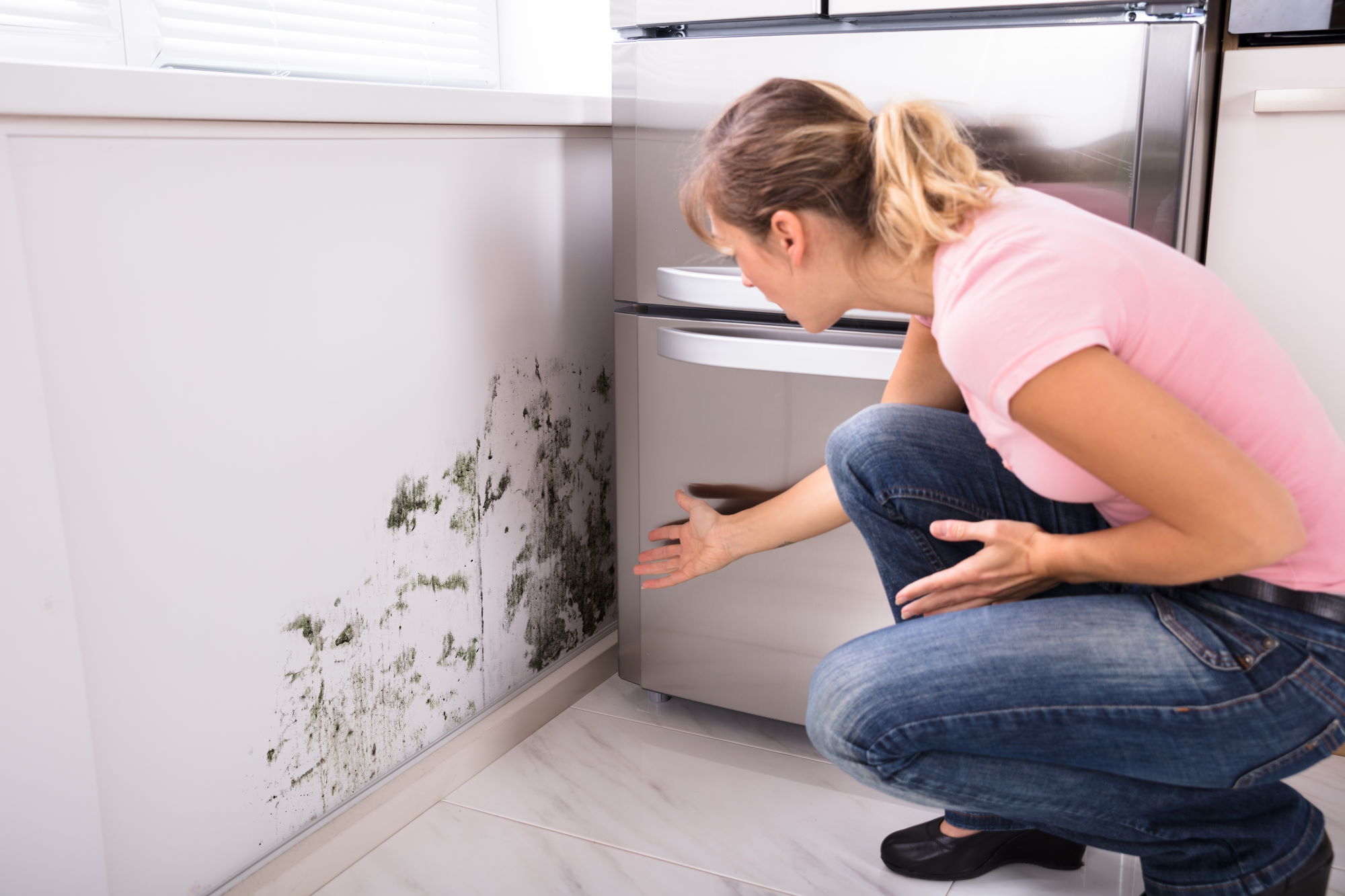We often get asked what the most common areas we find mold growth are and what can be done to prevent these issues from occurring. While it’s true that mold growth can be found in many different parts of your home, and for a variety of reasons, some causes are much more common than others.
This week we wanted to review some common causes of mold issues and how you can prevent them!
Behind Appliances
Appliances with water lines (dishwashers, refrigerators, washing machines, etc.) and those with condensers (air conditioning, refrigerators, etc.) can result in leaks and condensation that you may not notice right away. These small leaks and humidity problems can allow mold to develop underneath and / or behind these appliances where it can worsen and spread over time.
Since most people rarely pull out their appliances, most of these issues go unnoticed until they’ve become much more serious problems. Here are a few things you can do to keep an eye out for these issues:
- Read the user manual and complete maintenance as recommended by the manufacturer. Some appliances have filters or hoses that may require occasional cleaning or maintenance.
- Pull out appliances once a year to check to see if there are any issues you can’t see.
- Check for water damage under appliances like air conditioning units (particularly attic systems).
- Have appliances serviced if you notice a change in efficiency or performance. Clogs, leaks, and control panel issues can result in water damage that may first be noticed when your appliance isn’t working as it should.
In Attic Spaces
Mold issues are extremely common in attic spaces, but generally fit into two primary causes – water leaks and humidity problems. While a roof leak is most often the result of a sudden event such as a recent storm, humidity problems are caused by long-term construction or design issues.
High humidity in an attic space is a serious issue that can lead to moisture condensing on rafters or sheathing where it will wick into the wood, providing the perfect environment for mold growth. Here are the most common causes of humidity issues in attic spaces and how you can address them:
- Don’t over-insulate your attic. Attics are intended to breath, so stuffing insulation down into soffit vents or baffles restricts this airflow, trapping moisture in your attic area.
- Don’t vent bathroom exhaust fans into your attic. While not to code, this is still extremely common. Bathroom exhausts should be vented to the outside.
- Ensure your attic is adequately vented. This is particularly common in older homes that weren’t well insulated when they were originally built. These properties relied on gaps in the construction for airflow and often didn’t have dedicated soffit or gable vents installed. As your home became better insulated, the gaps in the construction were sealed up, necessitating dedicated vents.
- Inspect attic air conditioners regularly. These units can leak, resulting in water damage and / or humidity issues.
- Go up in your attic periodically. Many homeowners rarely, if ever, go up into their attic. As a result, issues aren’t discovered until months or years later. If you can’t go up into your attic yourself, ask a friend or family member to check on this for you.
In Basements
Basements, particularly in Northeastern PA, can be wet and damp. High water tables, fieldstone foundations, and yards that are graded towards the house all encourage moisture issues. To make matters worse, many of these issues are impractical, costly, or difficult to address properly.
That doesn’t mean, however, that basement moisture issues can’t be addressed to prevent mold growth. Here are some common causes of moisture issues in basements that you may not even think of:
- Ensure gutters are properly installed, unclogged, and directed away from the house. This is an incredibly common problem. The purpose of gutters is to direct rain water away from your foundation so that as little as possible comes into your basement.
- Install exterior drain tile. If your yard is graded towards your home, exterior drain tile can catch and divert rain water around your home reducing the amount of water that will get into your basement.
- Don’t plant bushes, trees, or plants too close to your house. This can trap moisture against your foundation where it can cause damage and / or enter your home. Plants should be planted no closer to your home than the drip edge of your roof (the end of the overhang).
- Install a Basement Waterproofing System or sump pump. Depending on the type and severity of your moisture issue, it may be recommended to install a system to remove the moisture or from your basement.
- Install a Dehumidifier. If you notice moisture condensing on surfaces, you have a humidity issue that needs to be addressed to avoid mold and other moisture damage. A dehumidifier should be adequate, able to reduce the humidity so that moisture is no longer condensing on surfaces, self-draining, and be intended to operate 24 hours a day / 7 days a week.
Moisture and mold issues are much more common than many homeowners realize. While we hope you never have a moisture or mold issue, we hope this helped you understand some common causes and what you can keep an eye on yourself. If you have any additional questions, please don’t hesitate to reach out to our offices, we’re happy to help.
About Disaster Blaster
Disaster Blaster is an indoor environmental firm serving the Northeastern PA Area. We have been providing our local area with unparalleled water damage mitigation, basement waterproofing, mold remediation, asbestos abatement, radon mitigation, and fire / smoke restoration services for decades, and are proud to have been named The World’s Greatest Indoor Environmental Firm. For more about Disaster Blaster, as well as more helpful tips, please visit our website at: www.disasterblaster.com or call our office at (570) 963-1123.


